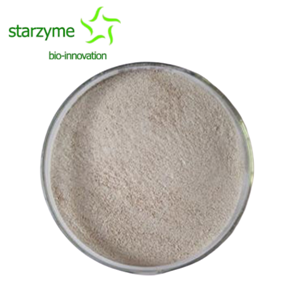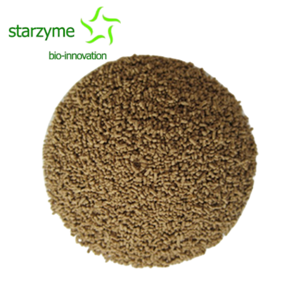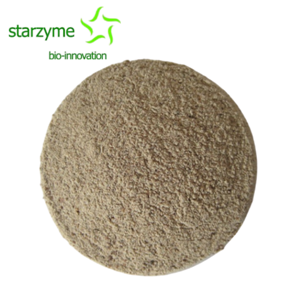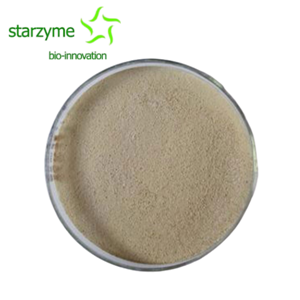Testing of Bacillus Subtilis in Feed Microbial Preparations
ICS 65.120 Classification no.: B 46
GB/T 26428一2010
People's Republic of China National Standards
Testing Standard for Bacillus Subtilis in Feeds
Issued on: 2011-01-14
Implemented: 2011-07-01
Issued by: People’s Republic of China General Administration of Quality Supervision, Inspection, and Quarantine & China National Standardization Management Committee
Foreword
This standard is drafted according to the regulations of GB/T 1.1-2009.
This standard is under the jurisdiction of the National Feed Industry Standardization Technical Committee (SAC/TC 76).
This standard was proposed and drafted by: The Microbiological Analysis and Testing Center of Guangdong Province.
The main drafters of this standard are: Honghui Zhu, Xiaotang Sun, Songzhen Yang, Yuanliang Chen, and Xianjiao Zhang.
Testing of Bacillus Subtilis in Feed Microbial Preparations
1. Scope of Application
This standard defines the regulations for the testing of bacillus subtilis in feed microbial preparations.
This standard is applicable to the testing and calculations of bacillus subtilis in feed microbial preparations.
2. Normative References
The following documents are essential for the application of this document. For dated references, only the dated version applies to this document. For cited documents without date, the latest version (including all amendments) applies to this document:
GB/T 8170 Numerical Rounding Rules, and Expression & Judgement of Limit Values
GB/T 14699.1 Feed Sampling (GB/T 14699.1 – 2005, ISO 6497: 2002, IDT)
GB/T 20195 Animal Feed: Sample Preparation (GB/T 20195 – 2006, ISO 6498: 1998, IDT)
3. Diluents, Mediums, and Reagents
Unless otherwise specified, only analytically pure reagents and distilled or deionized or equivalently pure water are to be used in the analysis.
3.1. 0.85% Sterilized Saline
3.2. Nutritional Agar (NA) medium, see A.1 of Appendix A
3.3. Gram Staining solution, see A.2 of Appendix A
3.4. 7% Sodium Chloride growth medium, see A.3 of Appendix A
3.5. V-P testing of mediums and reagents, see A.4 of Appendix A
3.6. Nitrate reduction medium and reagents, see A.5 of Appendix A
3.7. D-mannitol fermentation medium, see A.6 of Appendix A
3.8. Propionate utilization medium, see A.7 of Appendix A
4. Equipment and Glassware
In addition to laboratory equipment commonly used in microbiology, other equipment and glassware listed as follows:
4.1. Thermostatic Incubator: 37 ºC ± 1 ºC
4.2. pH meter, accurate to ± 0.1 units
4.3. Glass or plastic petri dish
4.4. Scaled pipette with marking capacities of 1 ml and 10 ml, with a minimum scale of 0.1 ml and 0.5 ml respectively
4.5. Glass or plastic-coated rod
4.6. Microscope, with 1000 times zoom
5. Sampling
The test samples are real and representative. Sampling tools such as shovels, spoons samplers, test tubes, jars, scissors, etc. should be sterilized.
The samples should be sent to the microbiological testing room as soon as possible. The size and method of sampling should be implemented according to GB/T 14699.1.
6. Sample Preparation
The sample preparation should be implemented according to GB/T 20195, and the sample should be inspected as soon as possible after preparation.
7. Operation Procedures
7.1. Sample Preparation for Inspection & Initial Suspension and Ten-Fold Dilution.
Using aseptic operations and conditions, weigh 25 g (ml) of the sample, add 225 ml of 0.85% sterilized physiological saline, homogenize for 1-2 min, and make an initial suspension of 1:10. Then, draw 1 ml of the initial suspension of 1:10, add 9 ml of 0.85% sterilized physiological saline, and mix thoroughly to make a 1:100 dilution. According to the bacterial content of the sample, further make a ten-fold serially increasing dilution.
7.2. Inoculation and Culture
Choose 2-3 suitable dilutions, keep and maintain for 10 min in water bath at 80 ºC ± 1 ºC, draw 0.1 ml with a sterile pipette, and inoculate two nutritional agar plates (3.2). Use the coating rod to apply the inoculum to the agar surface as carefully and quickly as possible. The coating rod must not touch the edge of the petri dish. Use a sterile coating rod for each dish. Cover the coated petri dish and let it stand at room temperature for 15 min, so that the inoculum is completely absorbed by the agar. Invert the plate and place in an incubator at 37 ºC ± 1 ºC for 48 ± 2 h.
7.3. Colony Counting and Screening
After incubation, select a plate with a colony count between 30-300. If large flake-shaped colonies grow in the dish, then it is not declared for use. However, if the flake-shaped colonies are less than half of the dish, and the distribution of the colonies in the remaining half is very uniform, you can calculate half of the colony count in the dish and multiply the result by 2 to represent the total colony count of the dish. The colony of typical Bacillus Subtilis is rough, opaque, non-shining, with dilated edges, round or wavy, irregular shaped, and grayish white or yellowish in appearance. Finally, select 5 colonies that feature these characteristics for experiment confirmation.
7.4. Confirmation Testing
7.4.1. Overview
At present, if the culture medium used in commercial biochemical identification kits or biochemical identification tubes is the same as the medium used in the confirmation testing of this standard, these kits or tubes can be used in accordance with the commodity instructions to carry out this confirmation experiment.
7.4.2. Strain Preparation
Pick a single colony from the petri dish, and streak the culture onto the nutritional agar plate, and cultivate at 37 ºC ± 1 ºC, for 48 ± 2 h. At least one well-isolated characteristic colony should be taken from each dish, streak and transferred onto the agar dish, and stored for confirmation testing.
7.4.3. Morphological Observation
The selected purified colonies were examined via Gram Staining microscopy (3.3). Bacillus Subtilis cells should be rod-shaped, with spores that are oval shaped, Mesozoic or near Mesozoic, and the cysts should not be enlarged to a significant degree.
7.4.4. Physiochemical Confirmation Testing
The purified colonies were selected for the testing of: 7% sodium chloride growth (3.4), V-P testing (3.5), nitrate reduction (3.6), D-mannitol fermentation (3.7), and propionate utilization (3.8).
7.4.5. Confirmation of Results
The confirmation of results is as listed below:
1. Bacillus Subtilis colonies have rough surfaces, are opaque, grayish white or yellowish in appearance, are rod shaped with oval-shaped spores, Mesozoic or near Mesozoic, with cysts that are not significantly enlarged.
2. The test results are positive for 7% sodium chloride growth, V-P testing, and nitrate reduction.
3. Acid can be produced via D-mannitol fermentation.
4. It can be judged and determined as Bacillus Subtilis without using propionate utilization.
The distinguishing characteristics of Bacillus Subtilis and Bacillus-like bacteria are shown below in Table 1.
Table 1. Distinguishing Features of Bacillus Subtilis and Bacillus-like Bacteria
| B. Subtilis | B. Licheniformis | B. Cereus | B. Coagulans | B. Firmus | B. Lentus | B. Megaterium | B. Pumilus | |
Anaerobic Growth |
|
|
|
|
|
|
|
| |
|
|
|
|
|
|
|
|
| |
Nitrate Reduction |
|
|
|
|
|
|
|
| |
Starch Hydrolysis |
|
|
|
|
|
|
|
| |
Gelatin Liquefaction |
|
|
|
|
|
|
|
| |
|
|
|
|
|
|
|
|
|
|
|
|
|
|
|
|
|
|
| |
Acid Production |
|
|
|
|
|
|
|
|
|
|
|
|
|
|
|
|
|
| |
|
|
|
|
|
|
|
|
| |
7% Sodium Chloride Growth |
|
|
|
|
|
|
|
| |
pH 5.7 Growth |
|
|
|
|
|
|
|
| |
Note: + = positive; - = negative; d = Some strains are positive; ND = Undetermined | |||||||||
8. Calculation of Results and Report
8.1. Calculating the Number of Bacillus Subtilis Colonies on each dish.
Calculate the number of Bacillus Subtilis colonies (a) on each dish using Formula 1:
Formula 1
a = (b ÷ A) x C
Legend:
a: Number of Bacillus Subtilis colonies on each dish;
b: Number of colonies confirmed as Bacillus Subtilis colonies after sample selection;
A: Number of colonies selected for confirmation (5);
C: Number of colonies on the dish that embodies the distinguishing features of Bacillus Subtilis.
The final result (a) should be rounded to the nearest whole number according to the numerical rounding rules in GB/T 8170.
For Example:
If there is a total of 78 colonies on the dish that feature characteristics of Bacillus Subtilis, 5 are selected for the confirmation testing, and 4 of which are confirmed to be Bacillus Subtilis colonies, then:
a = (4 / 5) x 78 = 62.4
a = 62.4 ~ 62
According to the numerical rounding rules in GB/T 8170, the number of Bacillus Subtilis colonies (a) on this dish is 62.
8.2. Number of Bacillus Subtilis Colonies in Sample: Calculation Method & Report
Choose 2 serial dilution dishes (each dilution should have at least one dish, with a confirmed number of Bacillus Subtilis between 30 – 300 on the dish.), calculate using Formula 2, which is 1 ml or 1 g of Bacillus Subtilis in the sample, N.
Formula 2
N = Ʃa / V · (n1 + 0.1n2) · d
Legend:
N: The total number of Bacillus Subtilis in the sample;
Ʃa: The total sum of confirmed Bacillus Subtilis on all dishes;
V: Inoculation volume of the dish, ml;
n1: Number of dishes for the first dilution;
n2: Number of dishes for the second dilution;
d: The dilution factor of the first dilution (the value of d for undiluted samples is 1).
The final result (N) should be rounded to the nearest 2 significant digits according to the numerical rounding rules in GB/T 8170. The number of Bacillus Subtilis colonies in the sample can also be recorded using Scientific Notation (1.0 – 9.9 times 10x).
Report the estimated number of Bacillus Subtilis per ml or g of the sample, CFU/g or CFU/ml.
Example 1:
If after the first dilution (10-3), the confirmed number of Bacillus Subtilis colonies are 168 and 215 respectively, and after the second dilution (10-4), the confirmed number of Bacillus Subtilis colonies are 34 and 35 respectively, then:
N = (168 + 215 + 34 + 35) / [0.1 x (2 + 0.1 · 2) x 10-3]
N = 472 / 0.00022
N = 2145450 ~ 2100000
According to the numerical rounding rules in GB/T 8170, the estimated number of Bacillus Subtilis of the sample in this example in units of g or ml, is 2100000 CFU/g (or ml), or 2.1 x 106 CFU/g (or ml).
Example 2:
If the last dilution (10-4) confirms that the number of Bacillus Subtilis colonies are 120 and 130 respectively, then:
N = (120 + 130) / (0.1 x 2 x 10-4)
N = 250 / 0.00002
N = 12500000 ~ 12000000
According to the numerical rounding rules in GB/T 8170, the estimated number of Bacillus Subtilis of the sample in this example in units of g or ml, is 12000000 CFU/g (or ml), or 1.2 x 107 CFU/g (or ml).




